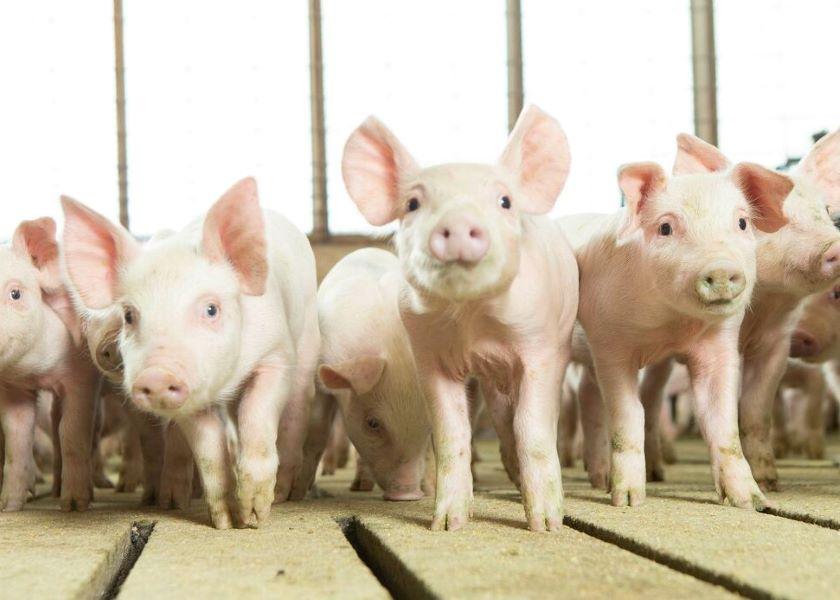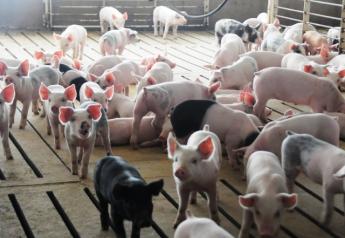A Surprise in the December Hogs and Pigs Report: Breeding Herd Increases

Despite analysts’ pre-report expectations, for the first time in 2.5 years, the national swine breeding herd has seen a year-over-year increase, according to the Dec. 1 USDA Hogs & Pigs Report.
Based on producer responses to surveys, USDA’s National Agricultural Statistics Service tallied the December 1, 2022, U.S. swine breeding herd up 0.5% from a year earlier. The average of trade guesses before the report was down 0.3%, a 0.8 percentage point difference but just outside the upper end of the range of pre-report estimates which were for the breeding herd to be down 1.0% to up 0.4% compared to a year ago.
“Anything plus or minus more than 1.0 percentage point from the average of pre-report expectations is commonly considered a surprise,” explains Lee Schulz, Iowa State University economist. “The December 2022 through February 2023 farrowing intentions of 2.947 million litters are up 1.0% from December-February actual sows farrowing a year ago, 1.2 percentage points larger than expected and 45,000 litters larger than the December through February expectations in the September report. USDA’s first estimate for March through May 2023 sows farrowing is up 0.5% from 2022 and was larger than expected pre-report.”
The increase in sow slaughter, high feed costs, Prop 12 uncertainty and questions surrounding demand given the high likelihood of a recession next year are just a few reasons why analysts were surprised about this insightful number in the report.
“It appears that producers were less worried about feed and demand than a year ago, allowing them to retain more gilts,” says Altin Kalo, chief economist at Steiner Consulting in Merrimack, N.H. “It’s not enough to start rebuilding the herd in force, but a more normal retention rate than last year when the spike in feed costs and pullback from China got everyone worried and cutting back.”
The December 2022 through February 2023 farrowing intention estimate actually “jibes pretty well” with the estimated size of the December 1, 2022 breeding herd, Schulz adds.
“The utilization percent, December-February sows farrowing divided by the December 1 breeding herd, would be right at the 20-year average. That gives us some confidence in the farrowing intentions number,” Schulz says. “The hog inventory cycle has three phases ― expansion, liquidation and turnaround. This may be an early sign of the turnaround phase. Or looking at it another way, maybe the next expansionary phase is not as far out on the horizon as was foreshadowed with the September Hogs and Pigs report.”
A Look at the Numbers
The total inventory for all hogs and pigs on Dec. 1 was 73.1 million head. That’s down 2% from a year ago and down 1% from Sept. 1.
The market hog inventory on Dec. 1 was 67.0 million, down 2% from 2021 and down 1% from the previous quarter. The total number of hogs under contract owned by operations with over 5,000 head, but raised by contractees, accounted for 48% of the total U.S. hog inventory, up 1% from 2021.
The breeding inventory numbers came in at 6.15 million head, up slightly from a year ago and up slightly from Sept. 1. The September through November 2022 pig crop, at 33.7 million head, was down 1% from 2021. The number of sows that farrowed during this three-month period was down 1% from 2021 at 3.0 million head, which represents 49% of the breeding herd. The average pigs saved per litter was 11.22 for the September through November 2022 period, compared to 11.19 last year.
U.S. hog producers intend to farrow 2.95 million sows during the December 2022 through February 2023 quarter, up 1% from the actual farrowings during the same period in 2021, and up 1% from the same period in 2020. Intended farrowings for March through May 2023, at 2.98 million sows, are up slightly from the same period in 2021, but down 2% from the same period in 2020.
What Does This Mean for Producers?
“In the short run, how many hogs and pigs are on the ground is what matters,” Schulz says. “Current and pipeline supplies along with the demand situation, determine prices. The Dec. 1 market hog inventory was down 2.0% from last year. The 180-pound-and-over category was down 1.9%. Those hogs have already come to market. The remaining market hog categories are also about 2.0% below a year ago. They’ll come to market from now through May.”
Demand is tepid for feeder pigs. Current market hog inventory numbers show space is available to house them, but cost of production forecasts remain near record levels.
“Every Friday, USDA’s Agricultural Marketing Service releases the National Direct Delivered Feeder Pig Report, a weekly price summary based on farm-to-farm delivery. Prices include both formula and open market (cash) prices,” Schulz explains. “For the week ending Dec. 23, cash early-weaned pigs (10-12 lb. basis)averaged $56.49 per head and feeder pigs (40 lb. basis) averaged $73.80 per head. These prices are $4.75 and $3.19, respectively, lower than a year earlier. Open market prices for early-weaned pigs are right at current formula price levels, suggesting somewhat limited competition exists for pigs not already priced by formulas.”
Because hog numbers will be lower year over year through at least spring, Kalo says hog prices should continue to perform well if export demand holds.
“The increase in the breeding herd and expectations for higher farrowings suggest a modest increase in production during the summer and fall. But futures are already pricing hogs for next summer below what they were this year and there is still ongoing uncertainty about disease impacts during this winter. This has been a significant factor in the last two years,” Kalo says.
He points out that the September report was relatively good in offering direction about supplies this past fall, but it was still higher than the final number.
“Productivity growth has been difficult to ascertain and it remains a wild card going forward,” Kalo says.
Record Pigs Saved Per Litter
Productivity of the breeding inventory, as measured by pigs saved per litter, has stalled in recent quarters and some would argue in recent years, Schulz says. The national average pigs saved per litter was 11.22 for the September-November period, compared to 11.19 last year.
“It is notable that, despite all the factors working against productivity, the 11.22 pigs is a record for the quarter and any quarter for that matter,” Schulz adds. “Seasonally the September-November quarter typically has the highest litter rates. An obvious question is where do litter rates go from here?”
Given that genetics, technology and management practices are continually improving, Schulz says it’s probably safe to say that litter rates have not topped out.
“But until the data proves otherwise, the 1% to 2% year-over-year increases experienced from 2006 to 2013 might be what we talk about,” he says.
2023 Marketing Decisions
The December Hogs and Pigs report includes all hogs and pigs, breeding and market inventory estimates for each of the 50 states. The quarterly reports in March, June and September include individual published state estimates for the 16 major hog-producing states and aggregates the remaining 34 states to comprise the U.S. total. How can this information help producers make decisions in the year ahead?
“The report would suggest that producers take advantage of the prices currently offered by futures, especially for the summer and fall, and lock in profits where possible,” Kalo says. “Export demand is not a given and the recession remains a risk. If producers are retaining more gilts, and supply expands, it could result in more downside price risk. The increase in the breeding herd suggests that producers are responding to market signals.”
Market analysts rarely forecast state-level inventories, Schulz says. Still, individual state numbers are important to the people in those states because they can provide early indications of changes in the local market that may be masked by aggregate, weighted average national numbers.
“Consider some of the larger gyrations in the latest report. The Minnesota breeding herd inventory was down 10.9% from a year ago. At 490,000 head, this is the second smallest Dec. 1 Minnesota breeding herd in the history of the data. The data series goes back to 1963. On Dec. 1, 1975, the Minnesota breeding herd was 465,000 head,” Schulz points out.
Other states to note:
- The Nebraska breeding herd was down 7.0%, and the smallest December 1 breeding herd since 2014.
- The Illinois breeding herd was up 11.9% compared to Dec. 1, 2021. Illinois has its largest Dec. 1 breeding herd since 1993.
-The South Dakota breeding herd inventory was up 9.4% year over year.
-The Oklahoma breeding herd inventory was up 6.5% year over year.
Here's a look at the Sept. 1 analysis: Bullish Hogs and Pigs Report: Producers Are Keeping Supply in Check







